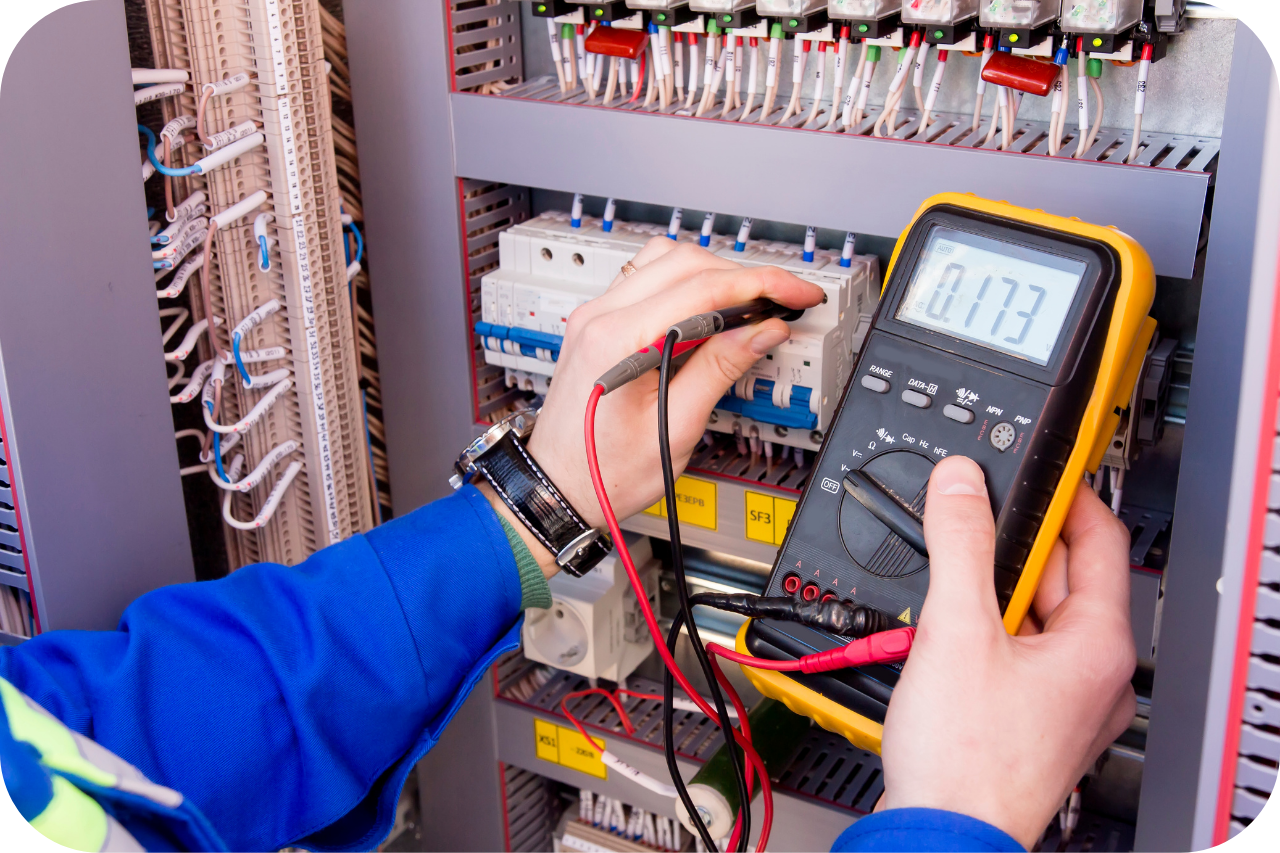Our Roar Solutions Statements
Our Roar Solutions Statements
Blog Article
The 3-Minute Rule for Roar Solutions
Table of ContentsThe Facts About Roar Solutions RevealedWhat Does Roar Solutions Mean?Little Known Facts About Roar Solutions.
In such an atmosphere a fire or surge is possible when 3 standard conditions are satisfied. This is typically referred to as the "dangerous location" or "burning" triangle. In order to safeguard setups from a possible explosion an approach of analysing and identifying a possibly dangerous location is called for. The purpose of this is to guarantee the right choice and setup of tools to ultimately stop an explosion and to guarantee security of life.
(https://global-sage-13a.notion.site/Master-Your-Skills-with-Electrical-Refresher-and-Hazardous-Area-Courses-150cf4f0932c80eb8e5ad98917397f75?pvs=4)
No equipment ought to be mounted where the surface area temperature of the tools is higher than the ignition temperature of the provided hazard. Below are some usual dirt unsafe and their minimal ignition temperature level. Coal Dust 380C 225C Polythene 420C (melts) Methyl Cellulose 420C 320C Starch 460C 435C Flour 490C 340C Sugar 490C 460C Grain Dirt 510C 300C Phenolic Material 530C > 450C Aluminium 590C > 450C PVC 700C > 450C Soot 810C 570C The likelihood of the danger being existing in a concentration high sufficient to cause an ignition will vary from place to place.
In order to identify this risk an installation is separated right into locations of risk depending upon the quantity of time the harmful exists. These areas are described as Zones. For gases and vapours and dusts and fibers there are three areas. Zone 0 Area 20 A dangerous environment is very likely to be existing and may be present for extended periods of time (> 1000 hours per year) and even constantly Zone 1 Area 21 A dangerous ambience is feasible but not likely to be existing for lengthy durations of time (> 10 450 C [842 F] A classification of T6 means the minimal ignition temperature level is > 85 C [185 F] Harmful location electrical devices maybe developed for use in higher ambient temperatures. This would certainly suggested on the score plate e.g. EExe II C T3 Ta + 60C( This suggests at 60C ambient T3 will not be surpassed) T1 T1, T2, T3, T4, T5, T6 T2 T2, T3, T4, T5, T6 T3 T3, T4, T5, T6 T4 T4, T5, T6 T5 T5, T6 T6 T6 A T Course rating of T1 means the optimum surface temperature level generated by the tool at 40 C is 450 C. Presuming the associated T Class and Temperature level score for the tools are suitable for the area, you can always utilize a tool with a more strict Division ranking than needed for the location. There isn't a clear answer to this concern. It truly does depend on the kind of equipment and what fixings require to be performed. Equipment with particular test procedures that can't be carried out in the field in order to achieve/maintain 3rd event ranking. Must return to the factory if it is before the devices's service. Field Repair By Authorised Personnel: Complex testing may not be needed nevertheless details procedures may require to be complied with in order for the equipment to keep its 3rd party rating. Authorised employees should be used to carry out the work properly Repair work need to be a like for like substitute. New component need to be taken into consideration as a direct substitute calling for no special screening of the tools after the fixing is complete. Each item of devices with a harmful score should be examined independently. These are detailed at a high degree below, but also for more thorough details, please refer straight to the standards.
8 Easy Facts About Roar Solutions Shown
The tools register is a detailed database of equipment documents that includes a minimum set of fields to recognize each item's area, technological parameters, Ex-spouse category, age, and ecological information. This info is critical for monitoring and taking care of the tools properly within dangerous locations. In contrast, for regular or RBI sampling examinations, the grade will certainly be a combination of In-depth and Close assessments. The proportion of In-depth to Shut evaluations will be established by the Tools Threat, which is assessed based upon ignition danger (the probability of a resource of ignition versus the likelihood of a flammable atmosphere )and the harmful location classification
( Area 0, 1, or 2). This variation will likewise influence the resourcing needs for job preparation. Once Great deals are specified, you can develop tasting plans based on the example dimension of each Whole lot, which refers to the variety of random devices items to be examined. To determine the needed example dimension, two facets need to be evaluated: the size of the Whole lot and the classification of inspection, which shows the degree of initiative that should be applied( decreased, typical, or boosted )to the examination of the Whole lot. By incorporating the category of inspection with the Great deal size, you can after that develop the appropriate rejection requirements for an example, meaning the allowed number of faulty items found within that example. For more information on this process, please refer to the Power Institute Standards. The IEC 60079 basic recommends that the maximum interval between examinations need to not exceed 3 years. EEHA examinations will certainly likewise be conducted outside of RBI campaigns as component of set up maintenance and devices overhauls or fixings. These evaluations can be credited toward the RBI example sizes within the influenced Lots. EEHA evaluations are conducted to recognize mistakes in electrical equipment. A weighted racking up system is crucial, as a single item of devices may have numerous mistakes, each with differing degrees of ignition threat. If the combined rating of both inspections is less than twice the fault rating, the Whole lot is deemed appropriate. If the Lot is still taken into consideration undesirable, it needs to go through a full evaluation or justification, which might set off stricter inspection methods. Accepted Lot: The root causes of any type of faults are identified. If an usual failure setting is discovered, extra equipment may need inspection and repair. Faults are identified by extent( Security, Honesty, Home cleaning ), making certain that immediate issues are evaluated and resolved immediately to mitigate any kind of influence on security or procedures. The EEHA data source must track and tape-record the lifecycle of mistakes along with the rehabilitative actions taken. Executing a robust Risk-Based Examination( RBI )method is vital for making sure conformity and security in taking care of Electrical Devices in Hazardous Locations( EEHA) (Roar Solutions). Automated Fault Rating and Lifecycle Monitoring: Effortlessly handle faults and track their lifecycle to improve evaluation accuracy. The intro of this assistance for risk-based inspection further reinforces Inspectivity's placement as a best-in-class service for governing conformity, along with for any asset-centric evaluation use situation. If you have an interest in discovering more, we welcome you to ask for a demo and find exactly how our service can change your EEHA management processes.
Getting My Roar Solutions To Work

In terms of eruptive danger, a dangerous area is a setting in which an explosive atmosphere is existing (or may be expected to be existing) in quantities that need unique preventative measures for the building, installment and use devices. eeha training. In this article we discover the challenges faced in the office, the danger control actions, and the required expertises to work safely
It issues of modern-day life that we produce, save or take care of a range of gases or liquids that are regarded combustible, and a variety of dirts that are deemed flammable. These compounds can, in certain conditions, create eruptive ambiences and these can have major and tragic repercussions. A lot of us know with the fire triangle eliminate any kind of one of the 3 aspects and the fire can not take place, but what does this mean in the context of hazardous locations? When damaging this down right into its simplest terms it is essentially: a combination of a specific quantity of launch or leak of a specific substance or product, blending with ambient oxygen, and the existence of a resource of ignition.
In most circumstances, we can do little about the degrees of oxygen in the air, yet we can have significant influence on resources of ignition, as an example electrical equipment. Hazardous areas are documented on the unsafe area category illustration and are identified on-site by the triangular "EX" indication. Right here, among various other key information, zones are split into three types depending on the danger, the possibility and duration that an explosive ambience will exist; Zone 0 or 20 is deemed the most unsafe and Zone 2 or 22 is regarded the least.
Report this page